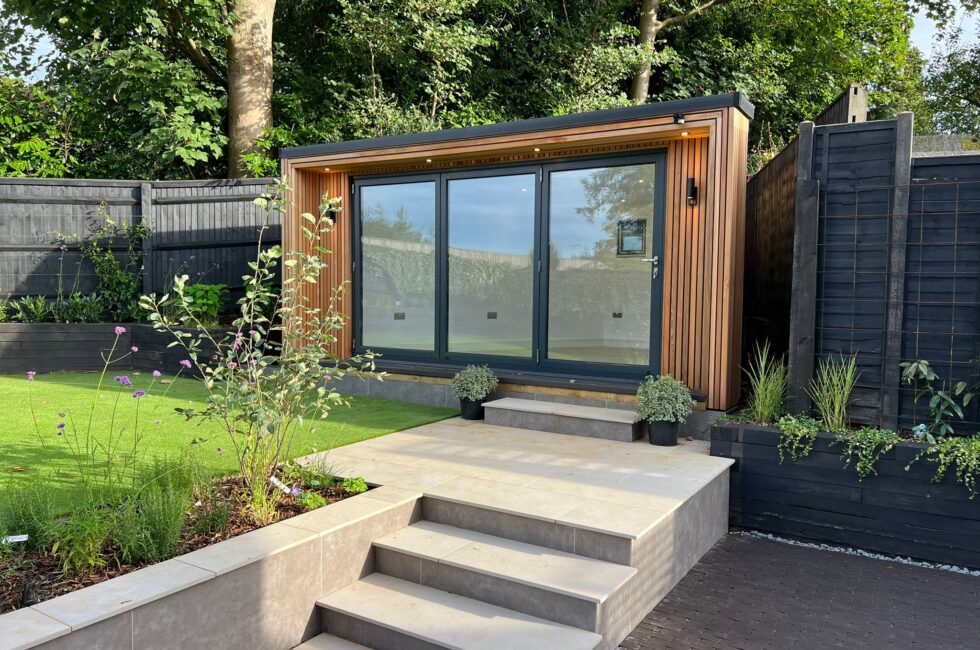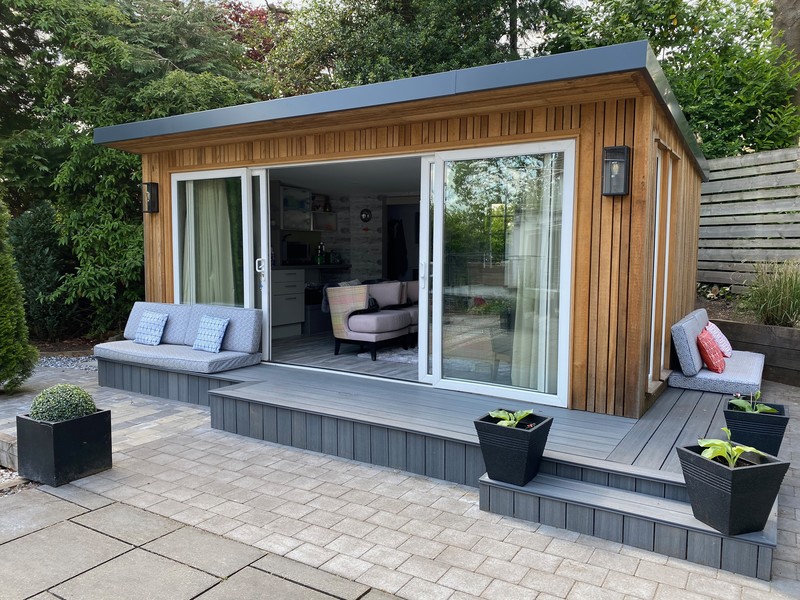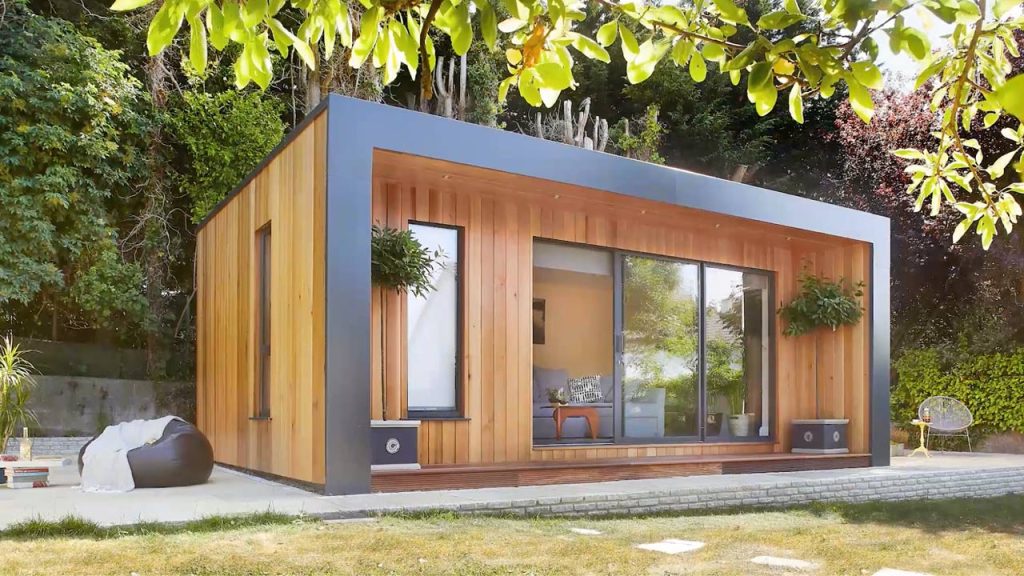Handy Facts On Planning Permission On Garden Conservatories
Handy Facts On Planning Permission On Garden Conservatories
Blog Article
What Planning Permits Are Required For Garden Rooms And Other Structures?
Certain size limitations are typically utilized to determine if you require planning permission prior to making conservatories, garden rooms or outhouses. Here's the criteria for size which could force you to seek planning permission.
If the outbuilding is detached, planning permission will generally be needed when the total size of all outbuildings proposed, plus any existing ones over half the size of land that surrounds the house (excluding footprint of the house).
Height Restrictions:
Single-story buildings: The maximum eaves height must not be more than 2.5 meters. The total height of the roof should not be more than 4 meters in the event of a dual-pitched pitch or 3 meters if it does not.
The maximum height of buildings within 2 meters is 2.5 meters.
Floor Area:
Even the planning approval isn't required, buildings with a greater floor area than 30 square meters could require approval according to the building regulations.
Proximity of borders:
If the structure is less than 2 meters away from a boundary, a planning permit is required if the structure's height exceeds 2.5 metres.
Building Use
While the size of the garden rooms isn't the only thing to consider the purpose of their use could influence whether planning permission is needed. If the purpose of the building is for residential use or commercial space, planning approval is more likely to be required.
Permitted Development Rights:
Permitted Development Rights Permitted Development Rights permit certain kinds of work without a complete planning request, have size and condition restrictions. These rights may vary depending on whether the property is within a conservation area.
Extensions and conservatories:
In general, for a single-story extension at the rear of a detached home the the maximum depth is 4 meters and for semi-detached houses or terraced houses it's 3 meters. This can be increased by 8 meters for detached homes and 6 feet for semi-detached and terraced homes, based on the circumstances.
The maximum height of an uni-story rear extension cannot exceed 4 metres.
Side Extenders
The maximum height of an extension on the side should not be more than 4 meters.
Volume restrictions:
Planning permission may be required in certain areas, such as conservation areas or Areas of Outstanding Natural Beauty. Any new construction that increases volume of original dwelling by more than 10% (or 50 cubic meters) or the larger of these two figures (whichever is greater), will require approval for planning.
Front Extensions
Extensions that extend past the front of the original home facing the street will usually need planning permission.
It is important to check with your local authorities, as regulations can vary depending on where you live and the conditions at the property. Additionally, even if planning permission isn't required Building regulations approval may be needed for structural and safety motives. Follow the top rated cabin heater for blog advice including what size garden room without planning permission uk, ground screws vs concrete base, garden out house, garden room vs extension, what size garden room without planning permission, outhouse, ground screws vs concrete base, garden office, armoured cable for garden room, 4m x 4m garden room and more.
What Is The Neighbourhood Planning Permission To Garden Rooms, Etc.?
If you're planning to construct conservatories, garden rooms, outhouses, garden offices, or extensions, neighbors are an important factor to consider when determining if planning permission is needed. Here are some important aspects to consider privacy and overlooking
A permit for planning is required if a new building could cause a loss in privacy by overlooking adjacent properties. This is to ensure that the proposed building does not adversely affect the living conditions of adjacent residents.
Overshadowing and loss of light:
Planning permission is required in cases where a construction project will likely to create shadows over neighbouring homes or a significant decrease in lighting. Local planning authorities assess the impact that day and night light has on nearby homes.
Disturbance and Noise
If the garden area or extension is to be used for activities that generate noise (such as an office at home with guests the office, a workshop or a music space) the planning permits are required. The noise level must be acceptable for neighbors and must not cause disturbance to the.
Character and Visual Impact
The size, design and style of a brand new structure must be in harmony with the surrounding neighborhood. Planning permission ensures the development is visually pleasing and doesn't detract the area's aesthetic.
Boundary Proximity
It is possible that structures constructed near to the property boundary may require planning permission, especially if their height exceeds 2.5 meters and they are within 2 meters of the boundary. The reason for this is to prevent disputes and impact on neighbors' properties.
Shared access as well as Rights of Way
It is important to get permission for planning if the construction works will affect shared access routes or rights of way. This will ensure that they aren't impacted negatively or blocked.
Neighbors' Objections
Planning applications can be discussed with residents of the area. Planning authorities will take into account the objections of neighboring residents in deciding whether to approve the application.
The impact on property values:
While it's usually not a primary concern, significant changes which may impact the property value of adjacent properties could have an impact on the need for permission to plan. These impacts will be considered by the local authority when they make their decision.
Covenants and Deed Restrictions
There might be covenants or deed limitations on the property which need to be followed regardless of the planning permission. Legal agreements may define what may and cannot be constructed, which can affect the harmony of the neighborhood.
Construction Disturbance:
The planning permission can be granted to address concerns over disturbances caused during construction like dust, traffic and noise. Conditions may be imposed to minimize the impact on neighbours.
Impact on the infrastructure
If the structure is causing additional strain on local infrastructure (e.g., drainage, parking, road usage) the planning permit ensures that the impacts are analyzed and appropriately managed.
Consultation with the Community:
In certain situations, a more extensive community-based consultation may be necessary, especially when it comes to large or controversial development plans. This facilitates a more democratized process of decision-making, which is based on local opinion.
In summary, neighborhood concerns play a significant role in the process of obtaining planning permission for conservatories, garden rooms, outhouses, garden offices, or extensions. The proposed development must not adversely impact the quality of life of neighbors, their privacy, the amount of light and noise, or the overall character. Consultation with the neighborhood planner and involving neighbors early in planning can solve these issues and lead to the process of approving the project. See the top rated composite garden building for site info including what size garden room without planning permission, ground screws vs concrete, garden rooms near me, garden room planning permission, garden rooms, Tring garden rooms, garden out house, insulated garden buildings, ground screws vs concrete, outhouse uk and more.
What Kind Of Approval Do I Need To Build A Garden, For Example?
If you are planning to construct garden rooms such as conservatories, outhouses extension or garden offices, the design and appearance of the structure play an important factor in determining if permission for planning is needed. These are the most important aspects to take into account: Compliance with Permitted Development Rights:
If the proposed structure is within the permitted development rights for your property, planning permission may not be needed. However, certain requirements must be met in terms of design and appearance.
Size and Scale
The structure must be proportional in size to the property and adjacent buildings. Buildings that are bigger than the limitations outlined in permitted developments rights require approval for planning.
Height and Massing
The mass and height of the new structure must be in keeping with the scale of the property as well as adjacent buildings. Planning permission is typically required for structures exceeding the height limit or not in scale with the buildings around it.
Materials and Finishes
The materials used and the finish should complement the current property and adjacent buildings. If the materials chosen are not compatible with the local style and design Planning permission might be required.
Design Harmony
The design of the new structure should harmonize with the architecture of the current property and surrounding buildings. The style of the structure to be constructed must be in harmony with local character and style.
Roof Design:
The style of your roof should be in harmony with the structure of the building you're renovating as well as the surrounding buildings. Planning permission might be required if the proposed roof design isn't in accordance with the local character and appearance.
Fenestration:
The layout and design of doors and windows should be in harmony with the property's existing and nearby buildings. The proposed fenestration may require permission to plan if it's not in line with the local style and style.
Facade Treatment
The exterior treatment must be in harmony with the surrounding buildings and structures. It could be necessary to seek planning permission for a proposed facade treatment that is not compatible with the appearance and character of the location.
Landscaping, Surroundings and Environments
The landscaping surrounding the new structure should complement the existing landscape and structures. Planning permission could be required if the proposed landscaping does not fit with the local character and appearance.
Visual Impact:
The visual impact of the structure on the area surrounding it must be kept to a minimum. If the structure proposed is likely to create a negative visual impact on the surroundings, planning permission might be required.
Heritage and Conservation Areas
If the property is located within a conservation or heritage area, stricter design and appearance criteria may be in place. Any new structure that does not meet these requirements could require approval for planning.
Architecture and Guidelines for Planning
Local planning authorities typically have specific design and appearance guidelines to be adhered to. Planning permission could be required when a building proposal does not conform to these guidelines.
In the end, the planning approval for conservatories, garden rooms, outhouses, gardens offices, or extensions is often contingent on the appearance and design of the proposed structure. It is essential to speak with your local planning authority at an early stage of the planning process to ensure you're complying with local guidelines regarding aesthetics and character, and also to determine if planning approval is required. Check out the recommended composite garden room for website examples including garden room heater, do you need planning permission for a garden room, garden room conservatory, insulated garden rooms, what size garden room without planning permission, insulated garden rooms, how to get power to a garden room, outhouse buildings, what is a garden room, composite garden rooms and more.